Cynops ensicauda
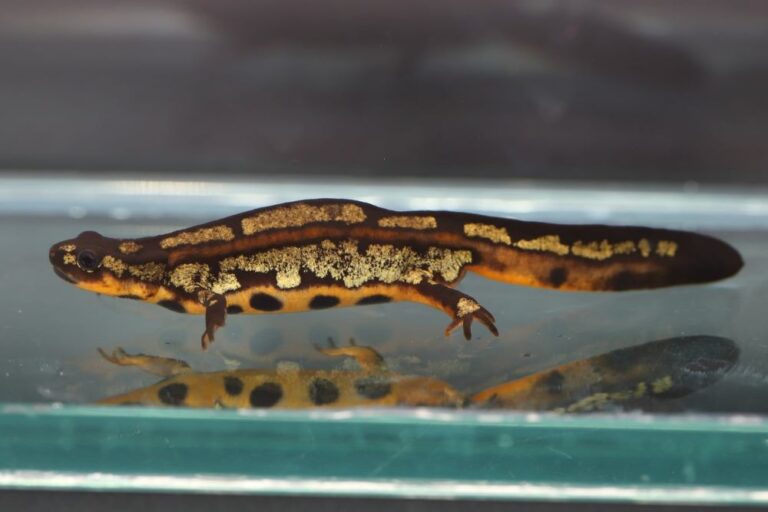
Taxonomic notes:
Two subspecies are currently recognized: C. e. ensicauda and C. e. popei, distinguishable on a morphological and areal level.
Description:
Medium/large newt of slender build, reaching a length of 12.7cm in males and 18cm in older females. It is the largest species of the genus Cynops . They have a squared head with clearly visible parotoid glands, although less pronounced than in C. phyrrogaster. The colouration consist of a black/grayish background with orange/reddish belly with dark spots and more or less marked edges. In many individuals there is a red line on the sides often discontinuous. In C. e. popei there are often white, yellow or gold spots on the sides and tail and the background color is usually darker than the nominal subspecies. The sexual dimorphism is rather evident: the females are larger in size and have a significantly longer tail and slender shape. The males have a tail approximately as long as the body, the end of which is much more rounded than in the female and in the reproductive period they have a very pronounced cloaca.
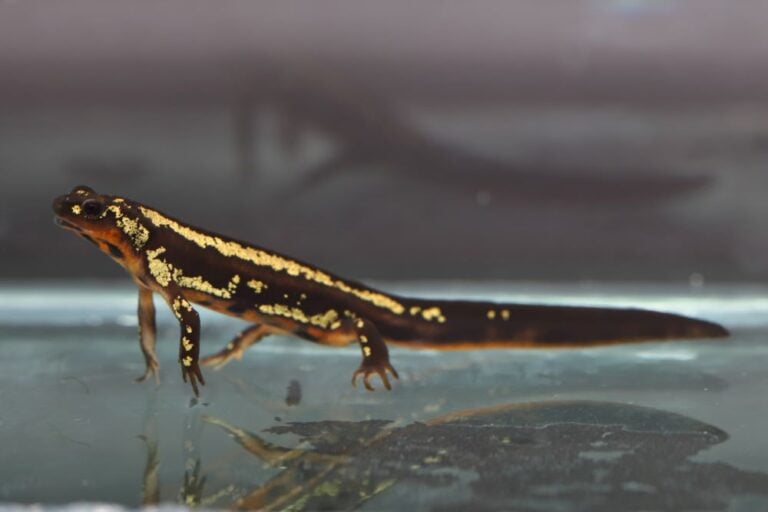
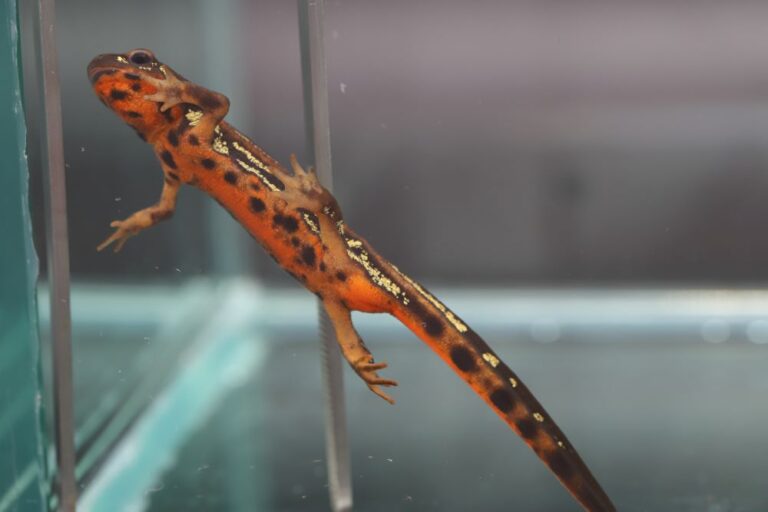
Distribution and habitat:
Cynops ensicauda distribution area is limited only to the islands of the Ryukyu archipelago, in Japan.
Care in Captivity:
An aquarium with a base of 40×60 cm can be excellent for a trio or a couple. The tank must be set up with dense vegetation and with many hiding places created with rocks, plants and woods. The bottom can be bare or composed of very fine sand in order to avoid intestinal obstructions. Gravel is not recommended.
An emerged area, even of a small size, is mandatory. They are a purely aquatic species, but some specimens may need to go out of water occasionally, particularly at night. Observing them for very long times out of the water can be a clear example of an unsuitable arrangement for them or some pathology.
Tank lighting is not necessary but recommended for the correct development of plants. Recommended temperatures are between 20-26°C but they can easily tolerate even lower temperatures in winter and temperatures up to 30°C in summer without showing signs of malaise, however I do not recommend temperatures over 26°C. The use of a filter in the aquarium is at the discretion of the keeper, however I recommend to set the pump to the minimum to avoid currents in the aquarium. The plants will have a crucial role and partial water changes are recommended in addition to regular top ups.
Diet:
They are not a picky species and they actively hunts anything that moves or not. They can be feed the classic preys for various species of caudata: earthworms, brine shrimp, thawed chironomus etc. Enriching the diet with other arthropods is always recommended. Food must be administered 3 to 2 times per week. I personally feed them once per week in the winter and twice in the summer.
Reproduction:
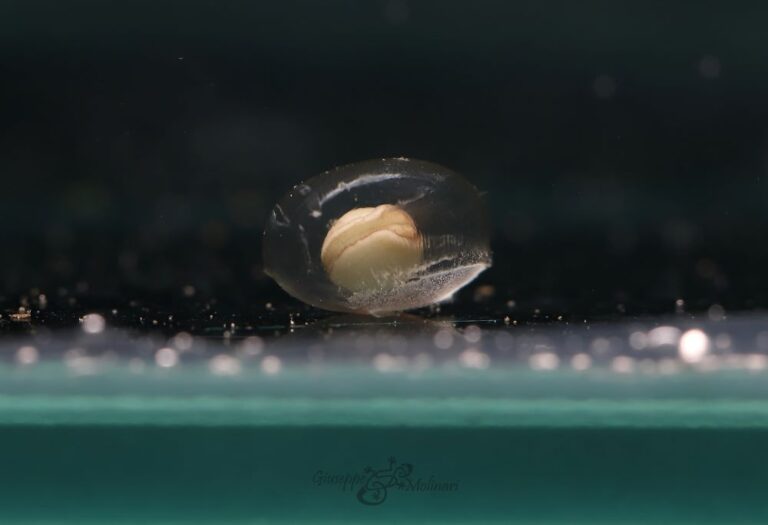
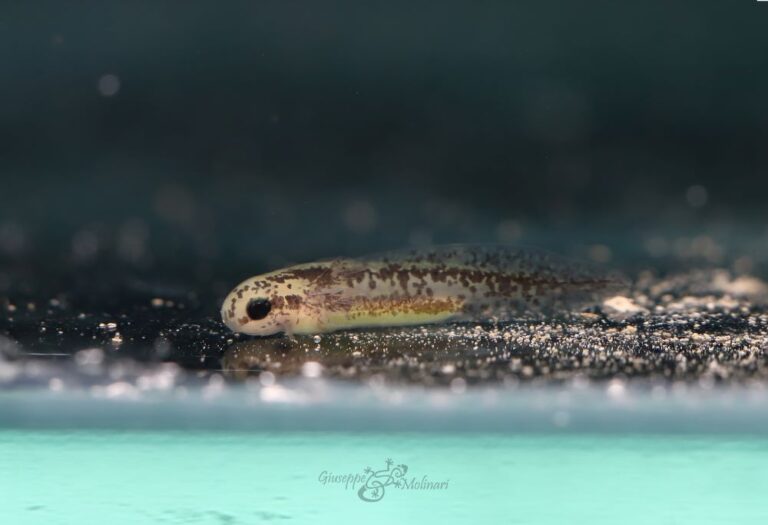
It is a species that if housed in a suitable tank reproduces with relative ease. The courtship takes place by the male through chases, tailfanning and occasionally biting his partner.
After fertilization, the female lays her eggs individually on the aquatic vegetation. A period of brumation is not necessary for this species, often a drop in the photoperiod and temperatures down to 10-15°C for the winter months is enough. The breeding season starts immediately as soon as the temperatures start to rise and can last until autumn, in this period each female can lay several dozen eggs.
It is recommended to remove the eggs from the parents’ tank to avoid cannibalism. A 5L container can be excellent for hatching and the growth of the larvae.The larvae must be fed with live food such as daphnia, white worms and other small invertebrates. Once reached the two cm you can also start to supply defrosted food of the right size but it is not always given that it is accepted. It is important not to make the growth trays too crowded otherwise the larvae will frequently bite off each other limbs (the amputated parts grow back completely in a few weeks). For the same reasons, it is preferable to keep larvae of different sizes in different tanks.
The metamorphosis occurs at different times depending on the temperature at which the larvae are housed. At higher temperatures corresponds a faster metamorphosis but with smaller individuals. After 24 hours from the metamorphosis, young juveniles can already be fed without problems. Neometamorphosed can be raised both in a terrestrial, but still very humid, set-up or in water. To stimulate the return to the aquatic phase, it is advisable to keep the young in a faunabox with a few centimeters of water and many emerged and semi-emerged holds, in particular it is useful to insert a lot of vegetation such as Java moss.
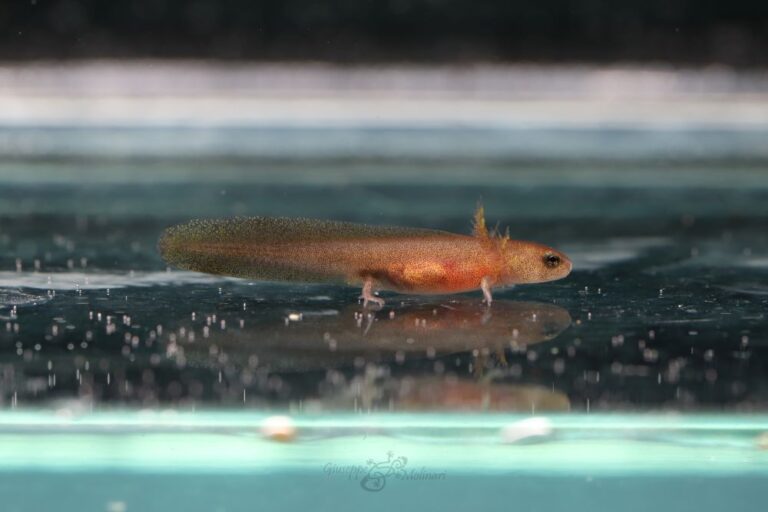
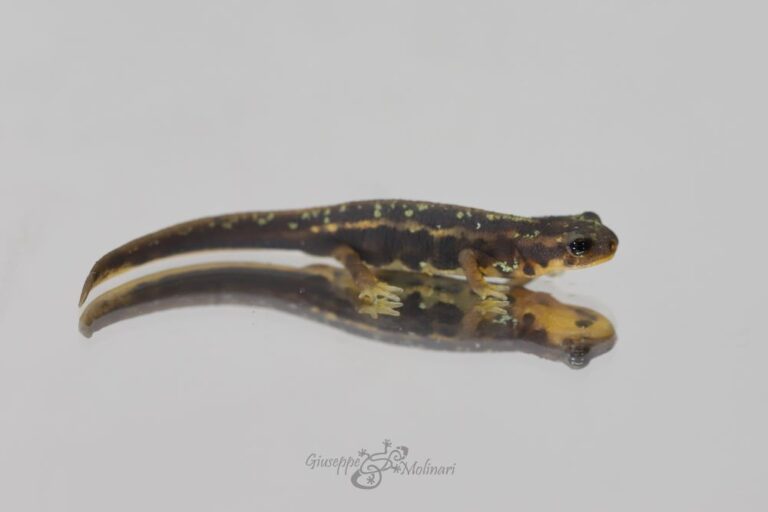
Availability:
Rather common species in terraristics, in particular the ssp. popei until a few years ago. Currently much less common due to regulations prohibiting new imports into the EU. Fortunately, many private individuals reproduce this species continuously and today it is one of the relatively more common species on the market.
Legislations:
They are not subject to any regulations.
Notes:
They are very active newt at any time of the day. They do not exhibit territorial behavior, bites can occasionally be exchanged during feeding but can hardly lead to serious injury for individuals. The larvae accept food from forceps already after about ten days from hatching, my advice is to supply food manually occasionally, in particular with the larvae close to metamorphosis. This will allow greater ease in post-metamorphosis feeding. I consider it an excellent species for beginners.
About the Author...
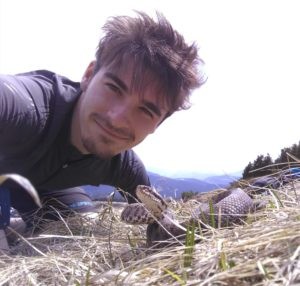
Giuseppe Molinari, born in 1996 in Cesena, spent his childhood in the Tuscan-Romagna Apennines where he became passionate about naturalistic subjects.
He is currently graduating in Natural Sciences at the University of Bologna.
He is passionate about wildlife photography with a predilection for herpetofauna and he collaborates as a volunteer in various LIFE projects within the National Park of the Casentinesi Forests.
It has been breeding caudata continuously since 2014, in particular he focuses on species of Asian origin.
References
Citation: Schultschik Günter. (2013). Threatened newts and salamanders – guidelines for conservation breeding. Frankfurt, M.: Chimaira-Buchh.-Ges.
Citation: AmphibiaWeb: Information on amphibian biology and conservation. [web application]. 2020. Berkeley, California: AmphibiaWeb. Available: https://amphibiaweb.org/. (Accessed: 2020).

